In the territories occupied by the Germans, helping Jews was associated with mortal danger. Those who nevertheless dared to do so spoke little about it and certainly did not keep any documentation. But are we really doomed to endless speculation?
In occupied Poland, the Germans quickly introduced laws that discriminated against the Jewish population. On November 23, 1939, an ordinance by Hans Frank was published, ordering Jews to wear armbands with the Star of David. In December 1939, they were forbidden to change their place of residence, and in January of the following year, - travel by rail. Their businesses, shops and plants were confiscated.
From October 1939, the Germans also began to isolate the Jewish population by organizing ghettos for them. They were created in almost all medium and large cities. Leaving them was forbidden on pain of death. The same punishment awaited all those who tried to help the inhabitants of the ghettos. Meanwhile, the support was necessary, because the conditions were inhuman in separated districts. The norm was cramped conditions, poor sanitation and, most of all, terrible hunger.
Save as much as possible
Despite the legal restrictions, Poles began to organize help for the people locked in them from the moment the ghettos were established. The missing things, mainly food, were smuggled into closed housing estates. It is estimated that up to 80 percent of the food delivered to the Warsaw Ghetto came from smuggling .
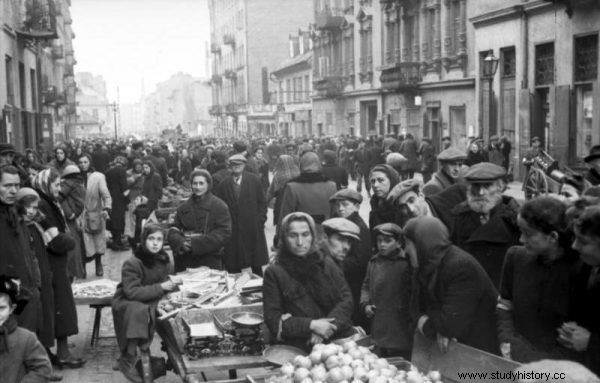
Literally everything was missing in the ghetto. The help from outside was a rescue (photo:Ludwig Knoblocch; license CC-BY-SA-3.0).
The Jews who were crossing to the "Aryan" side in search of food or a hiding place were also rushed as far as possible. They were given shelter, false documents were organized and they were moved to a safe place. Children were led out of the ghettos and placed in monasteries or orphanages.
Help on a larger scale began in 1942, when the Germans began implementing a plan to physically exterminate the Jewish population in extermination camps. Now more important than the food delivery was to find places where as many people as possible could safely hide.
Initially, the support was organized spontaneously by units. In December 1942, however, the authorities of the underground state established a specially designed institution:the Council to Aid Jews, operating under the code name "Żegota". It was the only such organization in occupied Europe. Apart from her, in Poland, the persecuted Jewish population was also supported by other organizations, such as political parties and the Church.
Fugitives from ghettos were sought shelter in various places. They were stored in cellars, attics and in specially masked rooms, which were entered, for example, through a wardrobe . There were also hiding places, dugouts, bunkers and even haystacks in barns.
Craftsman Staszek Jackowski in Stanisławów hid a Jewish couple behind a stove. Thirty other Jews were provided with a temporary roof over their heads in three bunkers equipped with beds, stoves, sewage and electricity. In turn, an employee of the Lviv city cleaning plant, Leopold Socha, found asylum for a dozen or so people ... in the sewers. Szewach Weiss also found an unusual "finish line":it was located in a hiding place between the wall of the family shop and the warehouse.
A house under a crazy star
Many Jews also took refuge in the Warsaw zoo. The on-site assistance was organized by the director himself, Jan Żabiński, and his wife Antonina. As it turned out, the possibilities were enormous. People hid in cages for animals, in underground passages, in sewers and in specially dug shelters. Some were placed in the back room of the lion's house and in interior rooms that were normally inaccessible.
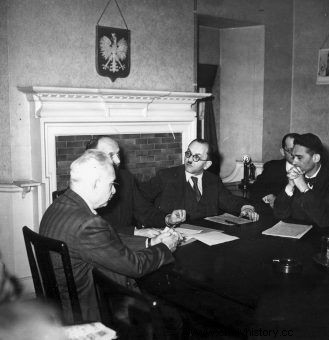
Meeting of the Council to Aid Jews, 1944 (source:public domain).
Nearly 300 people passed through the Żabiński house. Their headquarters was known underground under the code name "house under a crazy star" . In fact, sometimes it looked more like a study of curiosities than an ordinary villa. But it was thanks to this that even the most vulnerable could go unnoticed in this bizarre, human-animal menagerie.
Even if life in the zoo was a bit crazy, it must have seemed almost idyllic compared to the bunkers in hiding. This is what Diane Ackerman writes about the impressions of the "guests" in the book entitled "Asylum. A story about Jews hidden in the Warsaw Zoo ”:
Guests enjoyed the futuristic architecture of the villa and its surrounding park greenery, on which forty hectares could be forgotten about war and pretend to be summer vacationers in the countryside. Eden is a relative concept, for escapees from the ghetto, the zoo was like a real paradise garden, with trees, animals and motherly protection.
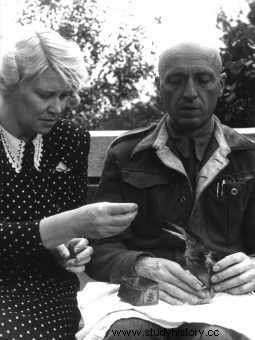
The director of the Warsaw zoo, Jan Żabiński, and his wife Antonina were not afraid to help during the war. Their history is described in detail in the book "Azyl. A story about Jews hidden in the Warsaw Zoo ”(Świat Książki 2017).
Help of Poles in numbers
How many Jews actually saved Poles during the occupation? It is difficult to give a certain number because rescue and hiding cases were usually not documented or recorded. After all, human life depended on keeping the secret. After the war, not everyone wanted to boast about it. Historians are therefore dependent on research and estimates.
American researcher specializing in Polish affairs, Richard C. Lukas, in his book Forgotten Holocaust. Poles under German Occupation 1939-1944 ”states that the number of survivors may range from 40,000-50,000 up to 120,000. And notes that the answer often depends on the… nationality of the page validating . Polish historians favor higher survivors and Jewish historians lower.
Lukas mentions, for example, the report by Jan Karski for the Prime Minister of the Polish government of May 25, 1944. It mentions the number of 200,000 survivors. Tadeusz "Bednarz" Bednarczyk, a member of the Home Army who had close contacts with underground Jewish units in the Warsaw ghetto, spoke about 300,000. Another conspirator, Władysław Zajdler, pseudonym "Żarski", stated that during the occupation as many as 450,000 Jews were hiding in Polish families. He admitted that not all of them survived the war. However, historians do not consider Bednarczyk's and Zajdler's accounts very credible.
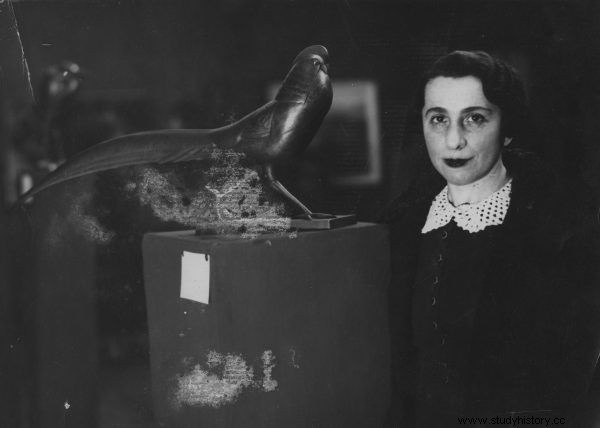
Among the Jews hidden by Poles during World War II was the sculptor Magdalena Gross (source:public domain).
450,000… or maybe only 30?
Żegota employees estimated that they helped 40-50 thousand Jews. And what are the calculations of contemporary Polish researchers? The Institute of National Remembrance reports that between 30 and 120 thousand people of Jewish nationality survived in occupied Poland.
Professor Grzegorz Berendt, who deals with the history of Polish Jews, risked a more precise description: It is estimated that around 50,000 Jews survived in occupied Poland "on the Aryan side". Of them only a few thousand have come across RPŻ , the rest took advantage of other help
Still other calculations were proposed by the director of the Museum of the History of the Polish People's Movement, Dr. Janusz Gmitruk. Referring to the findings of the historian of the people's movement, Professor Kazimierz Przybysz, he estimated the number of Jews saved only by the inhabitants of Polish villages at tens of thousands. And yet they would reach this city where many Jewish inhabitants were also hiding.
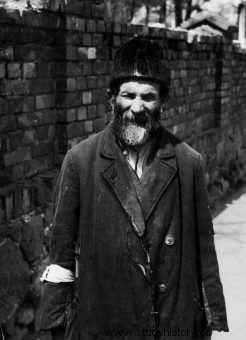
How many Jews received help from Poles? The researchers' opinions on this subject are divided (source:public domain).
The values proposed by researchers from outside Poland are much lower. For example, the American researcher Philip Friedman calculated that between 40,000 and 50,000 Jews survived the occupation in Poland. Some of them survived without the help of the local population. Some survived the concentration camps, others spent the war fighting as partisans and hiding in the woods. There could have been about 20,000 such cases, according to Friedman. Thus, thanks to Polish support, a maximum of 30,000 people could have survived.
The summary presented by the Jewish researcher Shmuel Krakowski goes in the same direction as Friedman's calculations. He himself is one of the former inhabitants of the Łódź ghetto. He gives the figure of 20,000 survivors.
More than in neutral countries
In order to show the scale of help provided to the Jewish population by Poles in Warsaw, the British historian Gunnar S. Paulsson made meticulous calculations. According to his findings, around 28,000 Jews were hiding outside the ghetto in Warsaw. 70-90 thousand Poles helped them. About 11,500 Jews survived from this group. This is how the researcher comments on his results in the book "Utajone city. Jews on the Aryan Side of Warsaw (1940-1945) ”:
If my calculations are correct, it means that despite the blows that fell on Warsaw during the war, despite the dangers that lay in wait for all residents of the city, despite the particular threats, which the Jews had to face and the threats that were unique to Warsaw (...) the survival rate among Jewish refugees - about 40 percent - was not much lower than in Western European countries such as the Netherlands, where estimated 57 percent of Jews survived.
Paulsson assesses the participation of the Warsaw population in helping Jews very positively. He especially comments on the high number of people who found a hiding place in the capital. His conclusion is worth quoting:
It is also admirable that the overcrowded, impoverished and terrorized city accommodated 28,000 refugees (most neutral European countries accepted fewer refugees throughout the war; Sweden (…) absorbed about 9,000).
The estimates for Warsaw also allowed Paulsson to estimate the number of survivors across the country. Since 11,500 Jews survived in the capital, and about a quarter of all survivors came from Warsaw - enumerated the historian - around 46,000 Jewish inhabitants survived throughout Poland.
It was impossible to save a million and a half
When assessing the number of survivors thanks to Polish aid - even an approximate one - let us remember that the conditions for supporting the Jewish population in occupied Poland were very difficult. First of all, it was punishable by an absolute death penalty, both for the hiding person and his family.

Most of the Righteous Among the Nations are Poles (Michał Józefaciuk, CC BY-SA 3.0 pl).
Also, do not be influenced by the statistics determining the percentage of the saved population. A very large population of Jews lived in Poland. This was the opinion of the author of Żegota's monograph, Dr. Teresa Prekerowa:
(...) the larger the Jewish population, the higher the loss rate . The hiding Jews had to mingle with the "Aryan" population, disappear among them, their excessive density must have been visible to the occupation authorities.
Half of the pre-war Jews in Belgium could have survived German rule, half of which accounted for some 36,000 people mixed up with the country's nearly eight million inhabitants. In Poland, it was not possible to save half of the Jewish community, that is over 1.5 million people.
And yet the most Righteous among the Nations are Poles.
Bibliography:
- Diane Ackerman, Asylum. A story about Jews hidden in the Warsaw Zoo , World of Books 2017.
- Richard C. Lukas, The Forgotten Holocaust. Poles under German occupation 1939-1944 , Rebis 2012.
- Gunnar S. Paulsson, The hidden city. Jews on the Aryan side of Warsaw (1940-1945) , Mark 2007.
